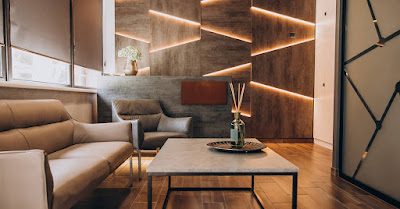The Essential Elements of Modern Facade Design
Amid the constant evolution of architectural practices, the choices for the facade of a building reflect its character and style. Modern facade design has evolved significantly, transcending conventional boundaries and embracing innovative concepts. Let’s explore in this blog about the key elements that define contemporary facades, catering specifically to Indian fabricators, design consultants, and ACP enthusiasts.
Materials in Modern Facade Design
Modern facade design places a strong emphasis on materials that marry aesthetics with functionality. From traditional glass and metal combinations to cutting-edge materials like Aluminium Composite Panels (ACPs), the choices are vast. A focus on durability, energy efficiency, and ease of fabrication characterizes the selection process, ensuring that the materials not only enhance the building's visual appeal but also contribute to its overall performance. There are several factors that need to be kept in mind for modern exterior wall cladding such as durability, weather resistance, installation complexity and much more. One of the core things is to choose sustainable materials for facade design. This is why, the experts of modern facade design depend on Aludecor.
Also Read : Eco-Design Revolution with ACP False Ceilings
Innovative Design Concepts
Innovation is at the heart of modern facade design. Creative use of geometric patterns, dynamic textures, and asymmetrical compositions breathes life into building exteriors. Indian fabricators and design consultants are exploring novel concepts such as kinetic facades that respond to environmental changes, and parametric design that introduces a new dimension of customization. These concepts redefine the traditional boundaries of aesthetics, creating facades that are both functional and visually arresting. From sustainable solutions to interactive facades, designers explore inventive ways in New-age facade materials that enhance energy efficiency, occupant comfort, and overall visual impact, creating facades that reflect the spirit of contemporary architecture.
Technological Advancements
Advancements in technology have revolutionized the way we approach facade design. From 3D printing to Building Information Modeling (BIM), technology empowers designers and fabricators to visualize, plan, and execute complex facade structures with precision. The integration of smart technologies, such as responsive lighting and interactive elements, adds a layer of sophistication to modern facades, creating structures that are not just static but dynamic and interactive.
Sustainability in Facade Design
With a growing emphasis on sustainable practices, modern facade design is aligning with eco-friendly principles. Incorporating energy-efficient glazing systems, green walls, and solar shading devices, Indian fabricators are contributing to environmentally conscious building practices. A focus on optimizing natural light and ventilation not only reduces energy consumption but also enhances the occupant's well-being.
Future Trends in Modern Facade Design
Looking ahead, the future of facade design in India holds exciting possibilities. The integration of biomimicry, where designs imitate nature, promises to bring organic forms and efficiency into facades. Additionally, the use of innovative materials, like electrochromic glass that adjusts tint based on sunlight, points toward a future where facades dynamically respond to their surroundings.
Modern facade design is a dynamic and ever-evolving field, providing a canvas for Indian fabricators, design consultants, and ACP enthusiasts to explore their creativity. By embracing innovative design concepts with sustainable materials for facade design and contemporary building facades, as well as leveraging technological advancements, the facade becomes not just a functional component but a work of art that defines the character of a building.




Comments
Post a Comment